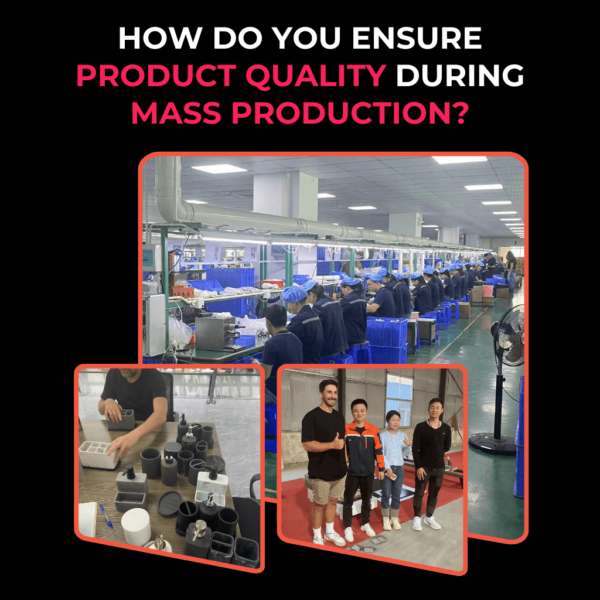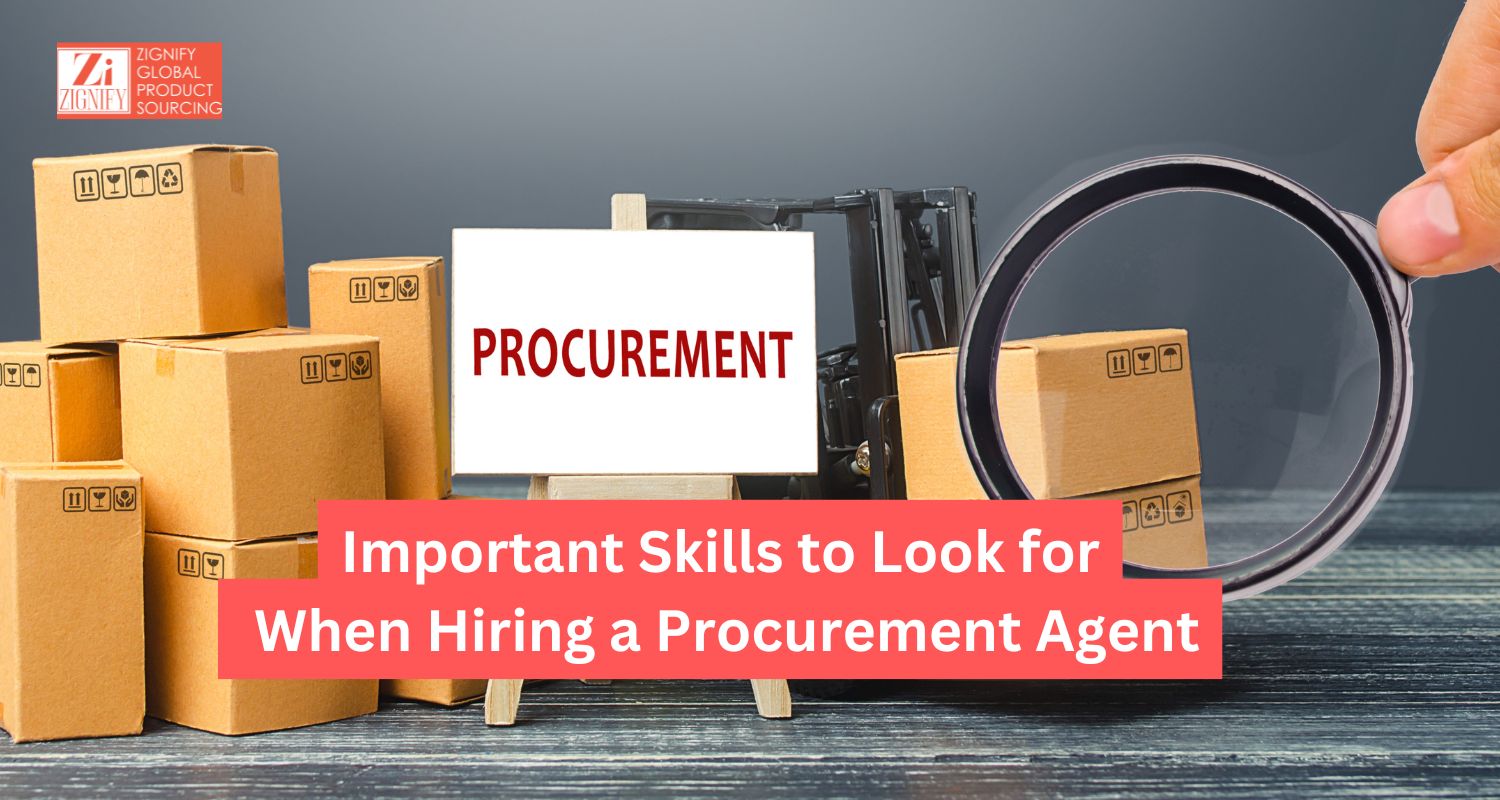
Ready to scale up your production but worried about maintaining quality? Whether you’re new to mass production or looking to improve your current processes, ensuring product quality is key. Let’s dive into how you can make sure every item you produce meets the same high standards, from the first to the millionth.
Why Quality Control Matters
Imagine your prototypes and initial small production runs have sold out quickly. That’s fantastic! But now comes the big question: how do you ensure that the millionth product is as perfect as the first? Quality control (QC) is the answer. Effective QC processes help you detect and eliminate defects, ensuring consistency across your entire production run.
The Big Picture: What is Quality Control in Mass Production?
Before we look into the nitty-gritty details of quality control processes, it’s crucial to understand that product quality control in mass production isn’t just about the final product. It’s about the entire process, from sourcing raw materials to the final inspection. Quality control is all about making sure every product that rolls off your production line meets your standards.
What are the Three Pillars of Quality Control?
Quality Control (QC) processes are generally divided into three main components: incoming, in-process, and final quality control. Let’s break these down.
Incoming Quality Control
First things first, you need to make sure the materials and components you receive from your suppliers are up to scratch. This is where Incoming Quality Control (IQC) comes in.
- Inspection and Testing: Inspect and test incoming materials and parts visually, dimensionally, and functionally. This step is crucial to catch any defects before they enter your production line. This includes visual inspection(Check for obvious defects in the materials or parts, dimensional testing (ensure parts meet specified dimensions), and functional testing (Verify that parts perform as required).
- Sampling: Often, you’ll use sampling methods to test batches of materials. This helps you efficiently spot-check without inspecting every single item.
By catching defects early, you prevent flawed materials from ever reaching the production floor, saving you time and resources in the long run.
In-Process Quality Control
Next up is In-Process Quality Control (IPQC), which is all about monitoring the manufacturing process as it happens. The goal here is to identify and fix defects as soon as they occur, especially in areas where manual labor is involved. Key steps include:
- Functional Testing: Ensure that each component works correctly.
- Critical Function Testing: For crucial parts, every single item should be tested (100% testing).
- Simple and Quick Tests: Tests should be easy to perform and produce clear pass/fail results. This way, even inexperienced operators can conduct them efficiently.
- Regular inspection Checks: Conduct checks at specific points at various and during stages in production. This helps identify and fix defects where labor and value are added to the product.
- Data Collection: Collect and analyze data from each test point to continually improve your process. This ensures any emerging issues are quickly addressed and resolved.
Final Quality Control (FQC)
This is the last line of defence before your products hit the market – Final Quality Control (FQC). It occurs just before packing and shipping your products. This is your last chance to catch any defects. Here’s what to focus on:
Perform thorough visual and functional tests on completed products. Despite earlier checks, this step is essential to validate the entire production process. Sometimes, you might conduct tests to the point of failure to ensure products can withstand intended use and beyond. This helps confirm the durability and reliability of your items. By ensuring each product meets your standards, you minimize the risk of defects reaching your customers.
How do you Implement Effective Quality Control Processes?
To design, implement, and maintain QC processes tailored to your specific products and market, here’s how to get started:
Assess Your Needs
Understand the unique requirements of your products and market.
Develop clear procedures
Develop a detailed quality control plan tailored to your production. Create detailed procedures for IQC, IPQC, and FQC.
Establish Robust Quality Control Systems
- Incoming Material Inspection: Start with the basics—ensure that raw materials and components meet your quality standards before they enter the production line. This step helps prevent defects from the outset.
- In-Process Inspections: Regularly check products at different stages of production. This proactive approach allows you to catch and address issues early, reducing waste and rework.
- Final Product Testing: Before products are shipped, conduct thorough inspections and testing to ensure they meet all specifications. This final check is crucial for maintaining customer satisfaction.
Invest in Technology
Consider the following:
- Automation: Automated systems reduce human error and increase consistency. Robots and automated machinery can handle repetitive tasks with high precision.
- IoT and Smart Sensors: Integrating IoT devices and sensors into your production line can provide real-time data on machine performance and product quality. This data allows for immediate adjustments and continuous improvement.
- AI and Machine Learning: Use AI to predict potential quality issues before they occur. Machine learning algorithms can analyze production data to identify patterns and suggest improvements.
Standardize Processes
Consistency is key in mass production. Standardizing your processes helps ensure that every product meets the same high standards:
- Detailed Documentation: Create comprehensive documentation for every step of your production process. This includes materials, methods, and quality benchmarks.
- Employee Training: Train your staff thoroughly on these standardized processes. Ensure everyone understands their role in maintaining quality.
- Regular Audits: Conduct regular audits to ensure adherence to these standardized procedures. This helps identify areas for improvement and reinforces the importance of quality.
Embrace Continuous Improvement
Periodically review and audit your processes to ensure they remain effective and up-to-date. Use data collected from quality tests to continually improve your processes.
Why It’s Worth the Effort
Implementing effective quality control processes might seem like a lot of work, but the benefits far outweigh the effort. Here’s why:
- Avoid Returns and Recalls: By catching defects early, you can prevent costly returns and recalls.
- Protect Your Reputation: Consistent product quality helps maintain your brand’s reputation.
- Customer Satisfaction: High-quality products lead to happier customers and repeat business.
- Cost Savings: Early detection of defects reduces the costs associated with rework and scrap.
- Regulatory Compliance: Ensures products meet industry standards and regulations, avoiding legal issues and fines.
- Competitive Advantage: High-quality products differentiate you from competitors.
- Risk Management: Reduces risks associated with poor-quality products, such as lawsuits or loss of market share.
- Supply Chain Reliability: Ensuring quality at every stage of the supply chain reduces disruptions.
Let’s Improve Your Product Quality Together!
Zignify Global Product Sourcing is here to help you improve quality with custom-tailored quality control services and solutions that suit your needs. If you have any questions or need further assistance, feel free to reach out. Let’s keep your production quality top-notch!



